SALT LAKE CITY, Utah – The chief of the Salt Lake City Police Department had to pause when asked how those in his profession are currently viewed.
“That’s a tough question,” said Chief Mike Brown. “I mean, it’s been a very difficult year.”
When you see the police body camera videos, the protests, the riots, the calls for reform and even defunding, it’s clear that for at least some there is a certain perception about police in America — and in Utah. To determine if that perception is accurate, we went looking for something concrete, like data.
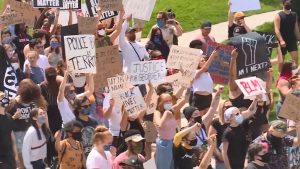
FILE: Protestors gather in Salt Lake City. (KSL-TV)
Over the course of five months, the KSL Investigators worked with 117 city and county law enforcement agencies statewide to gather that data.
Public records requests showed police were called out at least 10.3 million times over the past five years and used force 18,129 times – totaling 0.175% of the time.
But our efforts also uncovered inconsistent record-keeping, gaps in data and different definitions amongst agencies of what is included under “use of force,” making it difficult to provide a clear picture statewide.
And without accurate data, the truth is left up to perception – which can be subjective.
Just ask Trent Thayne.

Utah resident Trent Thayne. (KSL-TV)
Traffic Stop In Pleasant Grove
On Dec. 29, 2017, Thayne believes he was ripped from his vehicle without cause by Pleasant Grove police officers who had a target on his back.
“It was a premeditated beatdown,” Thayne said. “I literally, honestly, feel that they tried to kill me.”
The father, grief-stricken and enraged over the recent death of his son, had threatened police officers. He believed they should have done more to search for his son, whose car had slid off the road and into a river in American Fork Canyon.
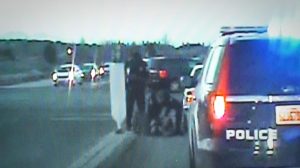
Dash camera video from the Pleasant Grove Police Department.
“There’s so many possibilities that he could still be here if they would have done something… and they didn’t,” Thayne said, adding that he later rounded up some guns and police were called. “I’m sure I said: ‘If I had the chance, I’d kill you. You guys deserve to die … you let this young man die because you’re too lazy to do your job.’ … I’m sure I said a lot of things that I probably meant at the time and didn’t really feel it later.”
Still, Heather White, the attorney who represented Pleasant Grove and its officers against the claim of excessive force Thayne filed in connection with the December 2017 traffic stop, said those threats changed how Thayne was approached by police when they later ran his license plate after reports of erratic driving.
“Where he had threatened officers with a weapon and had been very emotional due to his son’s death,” White explained, noting that this prompted the first responding officer to request backup. “Which is standard procedure to do on a call where someone is known to be potentially violent and have weapons.”
When Thayne eventually stopped his vehicle, he said he was ripped from the car and assaulted by police. White said the force used in the traffic stop was not excessive, but what was necessary for officers to restrain Thayne.
“I think they used great restraint in this circumstance … It was not excessive,” White said.
“I’m not saying that he’s lying about anything. It’s just very different perceptions,” she continued. “We’re just saying that his perception and what he’s claiming from that perception, is not accurate.”
Ultimately, the courts sided with police, and Thayne was charged with failing to stop for law enforcement. Thayne’s excessive force claim is still tied up in the courts.
Putting The Numbers In Context
For Ian Adams, executive director of the Utah Fraternal Order of Police, the math that shows Utah officers used force in only 0.175% of their calls over the past five years confirms his belief that use of force is not an issue in the Beehive State.

Ian Adams, executive director of the Utah Fraternal Order of Police. (KSL-TV)
“It’s a fact of life for Utah law enforcement,” he said. “It’s something that we ask, train and equip our officers for … and use of force is a vanishingly tiny percentage of the actual work that officers do on any given day.”
Still, that number is also certainly inaccurate, as the research also revealed that data on use of force is not uniform between agencies or even regularly tracked by at least 18 departments.
Some agencies only provided the use of force numbers or total calls for service numbers. Others sent the number of incident reports instead of the calls for service or only provided information from the past one, two or three years, instead of the requested five.
This, Adams said, points to a different, but important issue. He researches police-related issues and said many states or regions will have some sort of data collection program tied into a university or research institution. But in Utah, data is only forwarded to the Utah Department of Public Safety on a voluntary basis. The FBI asks agencies to report their use of force data annually, but only 13 agencies in Utah actually do.
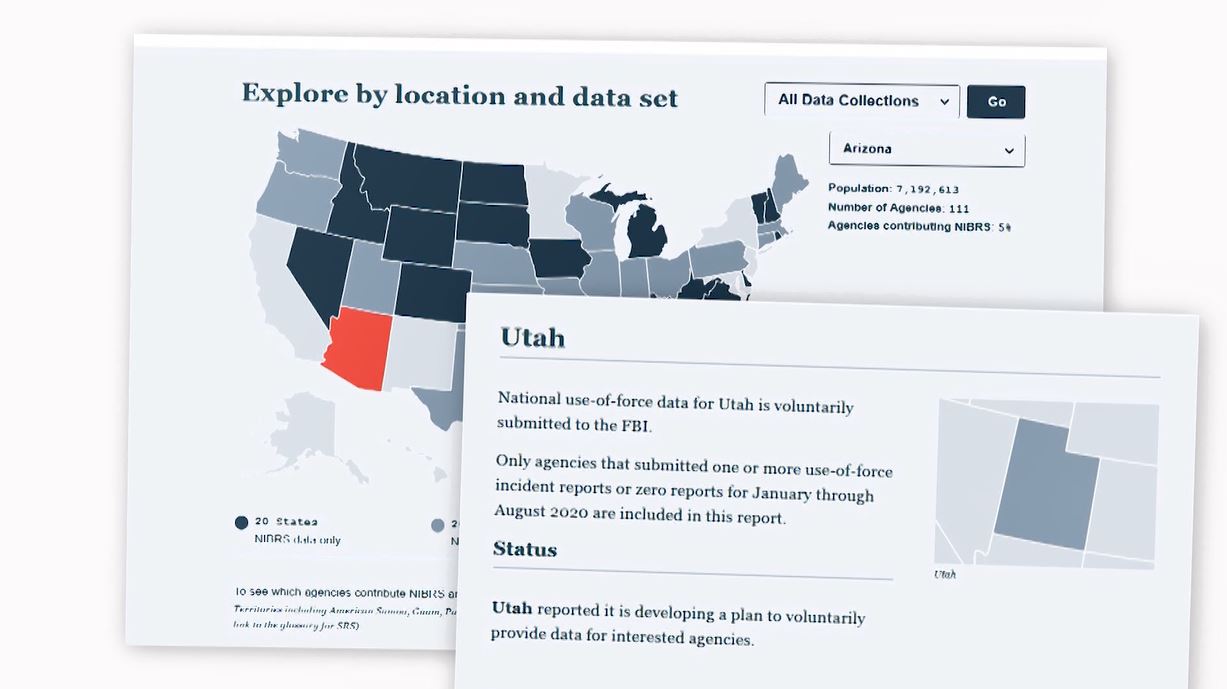
The FBI asks agencies to report their use of force data annually, but only 13 agencies in Utah actually do.
“Utah is behind the curve,” Adams said. “When it can be done, it gets done. But there’s not a great deal of consistency (with) that data, nor is there a great deal of ways of making sure that we get the data. So, if somebody doesn’t, if an agency doesn’t report it, it just doesn’t come in.”
Of the 117 agencies that KSL Investigators requested use of force data from, 21 never provided any data on force incidents, either because they never responded to multiple requests, declined to answer or denied requests or simply never provided the number they said they were working on. The majority that did provide use of force data spent days, weeks and even months — some digging through individual reports — just to find the information.
‘If You Can’t Measure It, You Can’t Manage It’
The Salt Lake City Police Department is one of the few agencies in the state which can show use of force data within a matter of seconds — and which publishes its data online where it can be easily accessed, viewed and searched by the public. In over 30 years in law enforcement, Brown said police reform is constantly taking place and that he has seen positive changes in how policing is done.
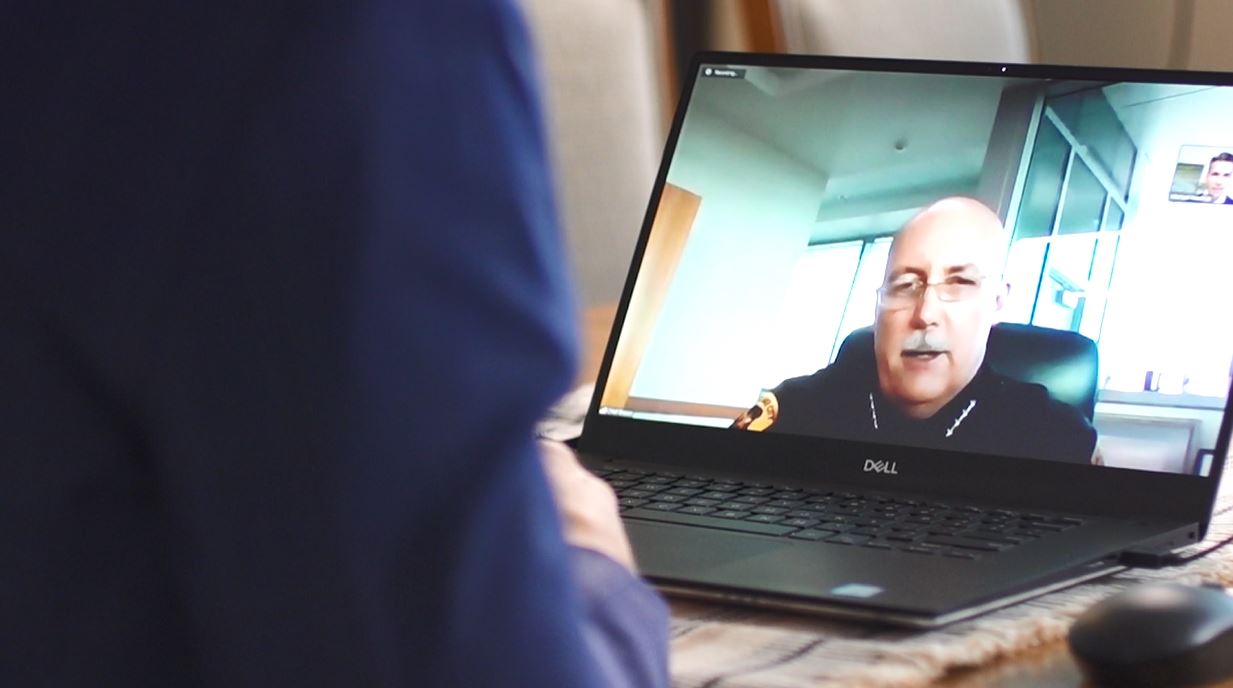
Chief Mike Brown with the Salt Lake City Police Department. (KSL-TV)
Data is a crucial part of that.
“The bottom line is, if you can’t measure it, you can’t manage it,” Brown said. “We’re constantly striving to take an evidence-based approach to policing that includes looking at patterns, trends, training needs, equipment, upgrades, policies. It’s just the industry’s best practice, to be able to look at use of force and see how you’re doing.”
Looking at use of force data helped the department realize that their use of tasers is 24% more effective than it is nationally. But while critical, Brown emphasized that the numbers only tell part of the story and said it’s important to look beyond the figures to the reasons behind them.
“Can the data be deceiving at times? It can,” Brown said. “I mean, sometimes you’ll look at things and go: ‘I have no idea why that looks like that.’ And so, you really need to peel that onion and find out what’s driving that data.”
Without the data, though, “no one can tell you what’s going on in Utah,” Adams said. There’s no way to look beyond the numbers if they aren’t being tracked. Part of the problem, Adams said, is that many departments don’t have the resources to commit to tracking the data.
For some, KSL Investigators found it was more of an accidental oversight. The Unified Police Department reports, reviews and records every use of force incident, but didn’t have a system in place to pull total numbers or information on use of force incidents.
“You’ve brought to our attention that we can’t track this data easily,” said Sgt. Melody Cutler, noting that Salt Lake County Sheriff Rosie Rivera has since formed a committee to remedy that.
Officials in agencies like the Mantua Police Department and Morgan County Sheriff’s Office, for example, also indicated that while these incidents weren’t tracked before, they were going to start tracking them going forward.
Others, like Beaver County Sheriff’s Office and Price Police Department, said it would take a costly and time-consuming search by hand to provide use of force data that wasn’t feasible. Eight agencies were willing to do the digging, but for a cost ranging anywhere from $40 to $500.
There were also inconsistencies in tracking. Some agencies could easily track from 2015 to the present, while others could only go back to 2017 or even last year, due to when they started tracking the numbers.
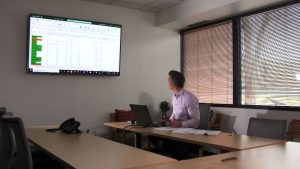
KSL Investigator Mike Headrick reviews data from the over 100 police agencies that responded. (KSL-TV)
And the way an agency counted use of force incidents sometimes varied.
American Fork and Sandy police departments, for example, are agencies that count a use of force incident as a single incident, even if multiple types of force were used.
The Ogden Police Department, on the other hand, counts every individual type of force used — even if it was used in a single incident — while the West Valley City Police Department for some time counted the number of people involved in the force incident as individual uses of forces. For example, if an officer pointed their weapon at a car full of five people, that was considered five different uses of force. They have since changed that.
Our investigation found there is also no standard, statewide definition of use of force, making comparison difficult. Some agencies provided data based on their definitions of use of force, while others asked the KSL Investigators to provide a definition.
For example, the Provo Police Department and Iron County Sheriff’s Office included verbal use of force in their totals, while some, like the Springville Police Department, included all uses of physical force, including minimal physical force. The Payson Police Department, on the other hand, didn’t consider it a use of force unless a weapon was used or an injury was sustained.
Many agencies, like the St. George and Syracuse police departments, considered it a use of force if an officer displayed their weapon while others, like the Tooele Police Department, didn’t consider an incident a use of force unless a weapon was pointed at someone.
Some agencies track the race and gender of those involved in incidents, while others don’t keep demographic records.
Statewide Standard?
“I would like to see a standard here in the state of Utah,” said state Rep. Angela Romero, D-Salt Lake City.
Romero sits on both the House and Interim Law Enforcement and Criminal Justice committees as well as the Criminal Justice Appropriations Subcommittee.
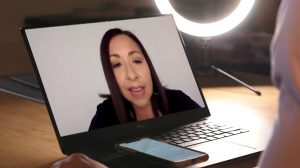
State Rep. Angela Romero, D-Salt Lake City. (KSL-TV)
“I think the data helps tell the story,” she said. “I think the data has a critical role in any story we tell. And there’ll be people that say that data could be misconstrued, but data is data. And we need the data in order to make informed policy decisions.”
But while Romero said she believes mandating data statewide is critical and state legislators have a role to play, it will take collaboration among all involved parties to effect meaningful and productive change.
“We need to sit down and have this conversation with stakeholders,” she said. “People who have concerns about police brutality, members within law enforcement, members within the community, to identify what are the best ways in which we can collect data.
“And how do we use that data? How much would it cost? And how do we use that to influence training? Or how do we shift cultures within our systems? And so, these are really big questions. And it’s going to take more than one session to solve them.”
Currently, there are 18 bills regarding police reform on the docket for the next state legislative session, four of them involving amendments or revisions involving the use of force.
Adams said mandating and standardizing data collection is “one of the rare opportunities in politics where… no matter what side of the issue they come from, everybody wants the data.”
“Now we just need to turn that demand into something actionable at the state level,” he said. “It’s not an impossible task, but it will cost money. There will be a resource need for it. And it’s no better time than today, I think.”
Have you experienced something you think just isn’t right? The KSL Investigators want to help. Submit your tip at investigates@ksl.com or 385-707-6153 so we can get working for you.
"use" - Google News
November 24, 2020 at 12:37PM
https://ift.tt/2J7ulwI
Police Use Of Force: KSL Investigators Find Inconsistent Records, Definitions Statewide - ksltv.com
"use" - Google News
https://ift.tt/2P05tHQ
https://ift.tt/2YCP29R
Bagikan Berita Ini














0 Response to "Police Use Of Force: KSL Investigators Find Inconsistent Records, Definitions Statewide - ksltv.com"
Post a Comment